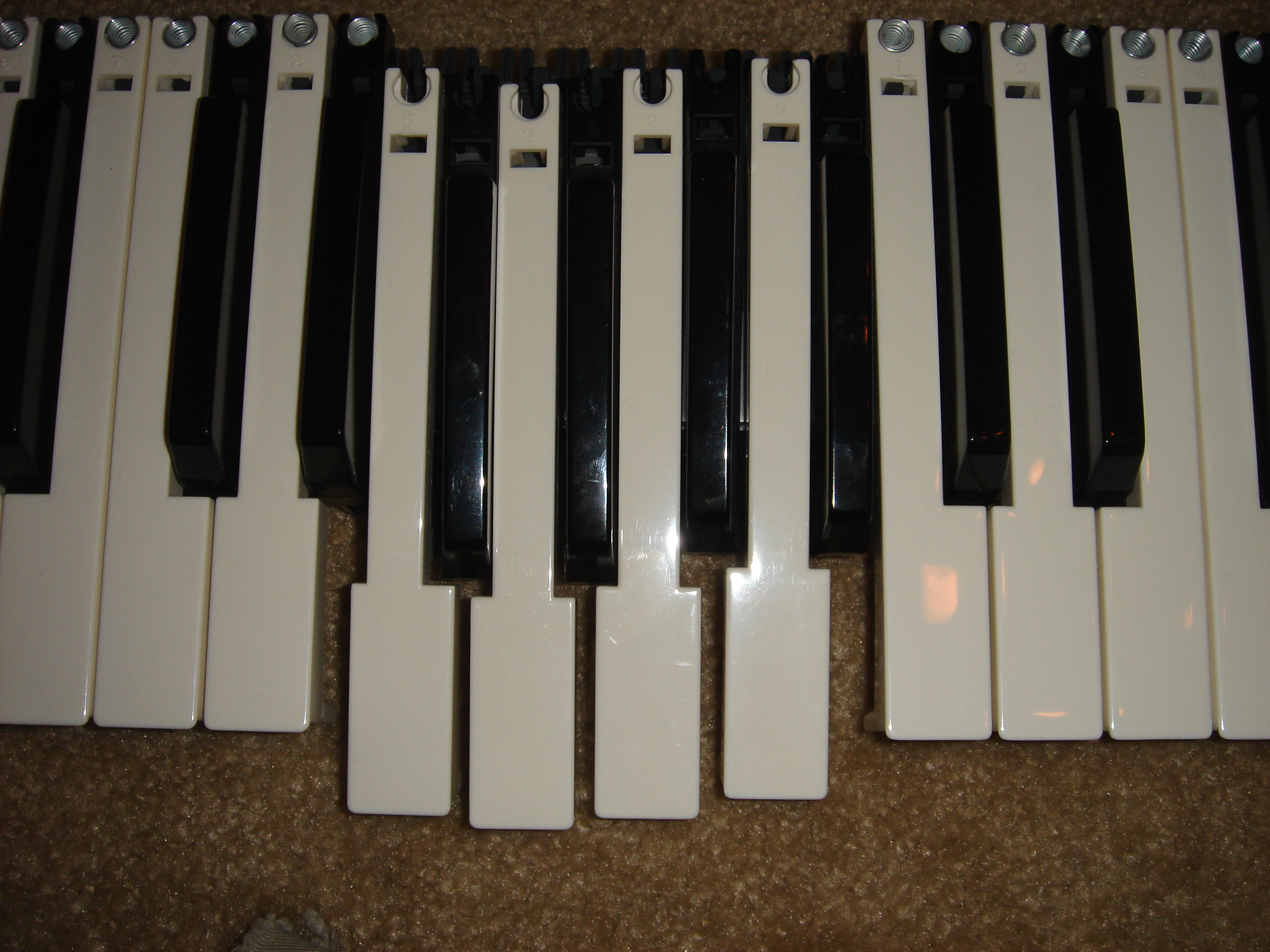
THOMAS' METRIC KEYBOARD DIY
Author: A. Thomas Tran
Contact: To avoid spam, please use my email from my resume Word document
(c) 2010-01-19, version 1.0
WHY THE METRIC KEYBOARD?
The quick explanation: Like a guitar, a scale on a piano should be as simple as learning 1 scale and transposing should be easy as sliding your hand over to the new key, instead of learning 12 different fingerings for each key's scale.
I was playing guitar one day and noticed the mathematical and practical beauty in being able to bar chords. And to transpose, you just slide your fingers to the right. And I looked at a piano, and it occured to me that a pianist must relearn new fingerings for *each* key, due to the way the five black keys are inconsistently placed between certain white keys. The distance between C and F (relative 4th) should always be consistently the same distance apart. Play a C# (black key) and play the 4th of it, F# (black key). Now play a F# (black key) and its 4th, B. Inconsistent. Black to white on some 4ths, black to black on others.
The human ear perceives a 4th to be the same "distance" harmonically. Likewise, the physical distance should be the same on a piano. When you want a 4th, you should already know exactly where a 4th lies, you shouldn't have to memorize a 12x12 multiplication table.
Let's go a level beyond that and discuss the implications on scales. Again, when you play a scale, you need to learn each of the 12 different unique scale patterns. Ideally, you'd just need to learn one scale and it should be applicable to all other keys since it's the same scale. On conventional pianos, a C scale consists of all white keys, whereas a D scale is a mish-mash of white and black keys (D E F# G A B C# D.).
(Obviously, with my design, a black key scale is different from a white key scale, but the idea is theoretically the same. Really you have to learn 2 scales, one for starting on a white key, the second for the black key. But the point is that the interval distances are still consistent.)
To summarize, the piano would make more sense if:
1) Distances between intervals were exactly the same.
2) Fingerings for each scale were exactly the same.
I tried to find a piano like this for months and months, but no luck. So after wishing I could have one for years, I said #^$#& this. Just make one. "Weeee! A new project!"
Fast forward 2 years later, I got what I wanted. The hardest part was finding a MIDI keyboard where I could pull apart all the keys and reposition them where I wanted. By design, almost all keyboards have an obstruction underneath white keys. (See pictures below to see what I mean.) This do-it-yourself shows how I made one so you can too.
A friend pointed out that my new keyboard vs old piano was like UK cm/meter vs. US inches/feet. He basically said it was like a "Metric Keyboard." I liked how the name was easy to understand, and embraced his suggestion 100%.
LET'S GET TO BUSINESS, BABY
1) Buy 3 M-audio 88key Keystations. They're cheap MIDI keyboards, probably can find them on craigslist, or at least if you buy 3 from guitar center you can talk them down to 70% original price. You need 3 Keystations because the C E F B's are useless since they don't have a black key on both the left and right. NOTE: Do NOT get the Keystation PRO's, they have semi-weighted action but cost 2x.

2) Open the 3 keystations with a screwdriver.

3) Pull out all the keys black keys. There's a spring underneath each note, Save them. Do not let them pop out into the air and fly over the patio or fly directly into your eye. You can throw away the C E F B keys since they're purposeless.

4) Now pull out the awesome D G A white keys, saving the springs.
5) Notice the protrusion underneath each white key (pictured). Use a plier to completely break each one off so you can fit the black keys there as needed.

6) Now you have gathered 44 black keys and 44 white keys. Redistribute these in an alternating pattern (interchange between white-black keys).

7) Replace the tension springs you saved.
8) Close up the keyboard. Chuck the other 2 at enemies.
9) Power it up and hook up the MIDI keyboard. Time to learn a whole new instrument. Immediately notice that the fingering for the C major scale is exactly the same fingering as an E major scale.

If you made it this far, thanks for reading. =) Hope you enjoyed it. I won't be offended if make fun of my nerdiness after this, I'm proud to be a geek.
© 2010. A. Thomas Tran.